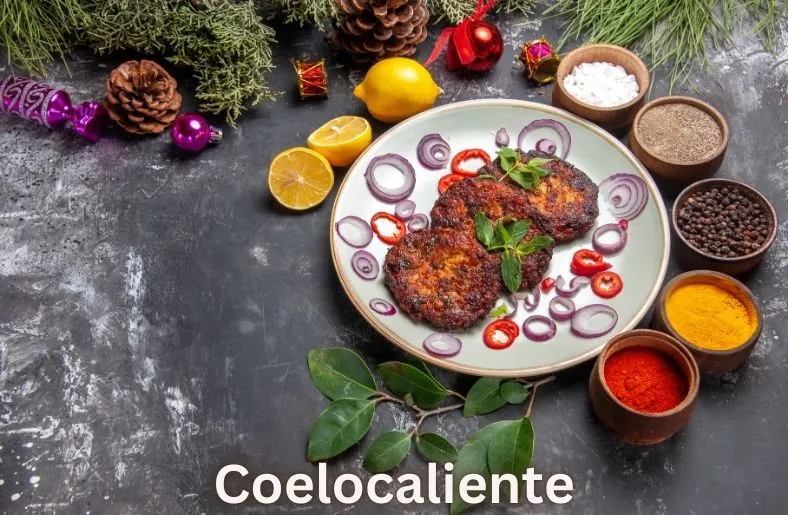Coelocaliente is a unique and vibrant culinary tradition that captivates food lovers. Originating from diverse cultural backgrounds, it blends influences from indigenous communities and settlers. This fusion creates a rich tapestry of flavors, each telling a story of its past.
Food holds a special place in Coelocaliente culture. It is a celebration of togetherness and heritage rather than just food. Sharing meals strengthens bonds within families and communities. The balance of bold spices and fresh ingredients makes every dish a memorable experience.
In Coelocaliente, food is not just about taste; it is about connection, history, and tradition.
Historical Background and Evolution
Coelocaliente cuisine has deep roots in indigenous communities. These early cultures cultivated a rich relationship with the land. They used locally sourced ingredients, which became the foundation for many traditional dishes.
As time passed, colonization brought new influences. The fusion of indigenous practices with those of settlers led to a dynamic evolution. Spices, herbs, and cooking techniques from different regions blended seamlessly into the cuisine.
Despite these changes, Coelocaliente has maintained its authenticity. Traditional dishes remain central to its identity, and people still favor local ingredients. However, modern chefs have added new twists, embracing innovation.
Today, Coelocaliente cuisine thrives. While modern techniques and flavors influence it, the essence of its heritage remains intact. This careful balancing act between history and innovation guarantees its position in the world’s culinary scene.
Core Ingredients of Coelocaliente Cuisine
The heart of Coelocaliente cuisine lies in its key ingredients. Chilies, corn, and fresh herbs are essential. These ingredients create the bold and vibrant flavors that define the cuisine. Many recipes utilise a lot of chillies to give them depth and spice. They contribute a distinct flavourful and spicy spiciness. Coelocaliente staple maize is frequently processed into masa. It forms the base of many dishes like tortillas and tamales, providing a rich texture.
Fresh herbs are essential, such epazote and cilantro. They elevate the flavor, adding freshness and complexity to every bite. The key to Coelocaliente’s distinct taste lies in using locally sourced, fresh produce. Local farms and marketplaces ensure its authenticity. Each dish bursts with natural flavor and seasonal delight. This connection to the land is what makes Coelocaliente so special.
Signature Dishes in Coelocaliente
The Role of Cooking Techniques
In Coelocaliente cuisine, cooking methods play a vital role. Traditional techniques, such as grilling, slow cooking, and steaming, preserve the essence of the ingredients. These methods enhance the natural flavors, making each dish more vibrant.
- Meats and veggies gain a smokey flavour when grilled.
- Over time, slow cooking enables flavours to combine and become more intense.
- Steaming helps retain the freshness and nutrients of vegetables.
Texture is just as important as flavour in these methods. Grilling gives food a crispy outside and a tender inside. Slow-cooked dishes melt in your mouth, while steamed ingredients stay moist and flavorful.
Modern chefs are blending these traditional methods with innovative approaches. They use new equipment and techniques to enhance the dishes while respecting the essence of Coelocaliente cuisine. This fusion creates a perfect balance of tradition and modernity.
Coelocaliente’s Influence on Modern Kitchens
Contemporary chefs are embracing Coelocaliente flavors in new and exciting ways. They adapt traditional recipes with a modern twist, blending old and new techniques.
- Fusion cuisine is at the forefront. Coelocaliente flavors are mixed with global influences, making it even more diverse.
- Dishes that once belonged to local kitchens are now being served worldwide.
Chefs are incorporating spices like chilies and fresh herbs, which were once traditional staples. They are experimenting with new textures and presentation styles. This strategy is increasing the cuisine’s appeal and accessibility to diners from across the world.
Famous chefs like Enrique Olvera and Pablo Salas are leading the change. They are introducing Coelocaliente into fine dining with innovative creations. Their restaurants are helping to expand the reach of this vibrant cuisine. As a result, Coelocaliente is gaining recognition on the global culinary stage.
How to Experience Coelocaliente at Home
Bringing Coelocaliente flavors to your kitchen is simple and rewarding. Start with basic ingredients like chilies, fresh herbs, and spices. These are essential to creating authentic dishes.
Try incorporating these ingredients into everyday meals. For instance, add spicy chilies to soups or use fresh herbs in sauces. This introduces bold flavors without overwhelming the dish.
Experimentation is key to enjoying Coelocaliente at home. Mix traditional ingredients with your favorite recipes. For example, pair roasted vegetables with a tangy Coelocaliente sauce.
Creativity transforms simple dishes into flavorful experiences. By exploring new combinations, you’ll enjoy a taste of this vibrant cuisine.
Conclusion
Coelocaliente is more than just a culinary tradition; it’s a celebration of culture, history, and community. Rooted in the practices of indigenous communities and enriched through centuries of cultural exchange, this cuisine embodies a harmonious blend of authenticity and evolution. Its reliance on fresh, locally sourced ingredients and time-honored cooking techniques gives it a distinctive flavor profile that continues to captivate.
Signature dishes like Sopa de Mote, Tacos de Pescado, and Tamales Rojos reflect the diverse influences that have shaped Coelocaliente over time. Modern chefs are redefining its boundaries, fusing traditional elements with innovative techniques to introduce it to global audiences.
Whether experienced in fine dining or created at home, Coelocaliente offers a flavorful journey through history and creativity. By embracing this vibrant tradition, we connect with a rich culinary heritage that continues to inspire and delight.

